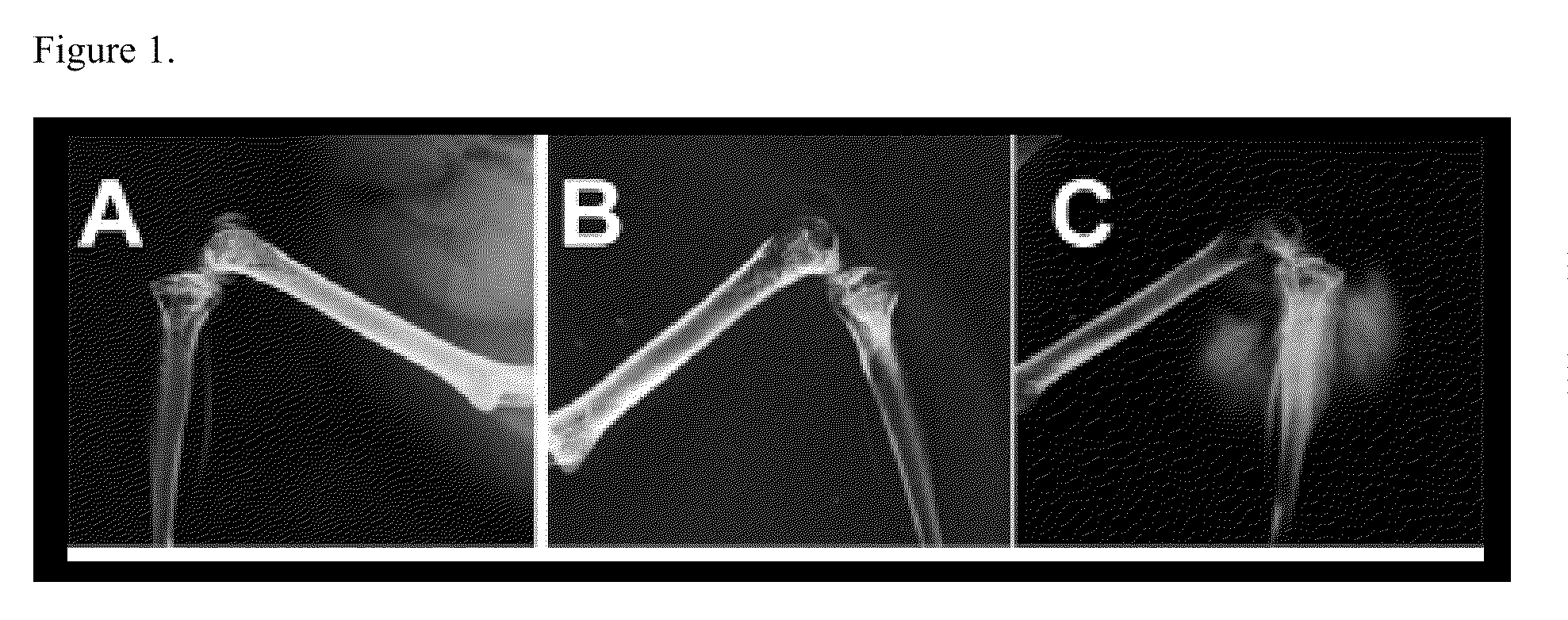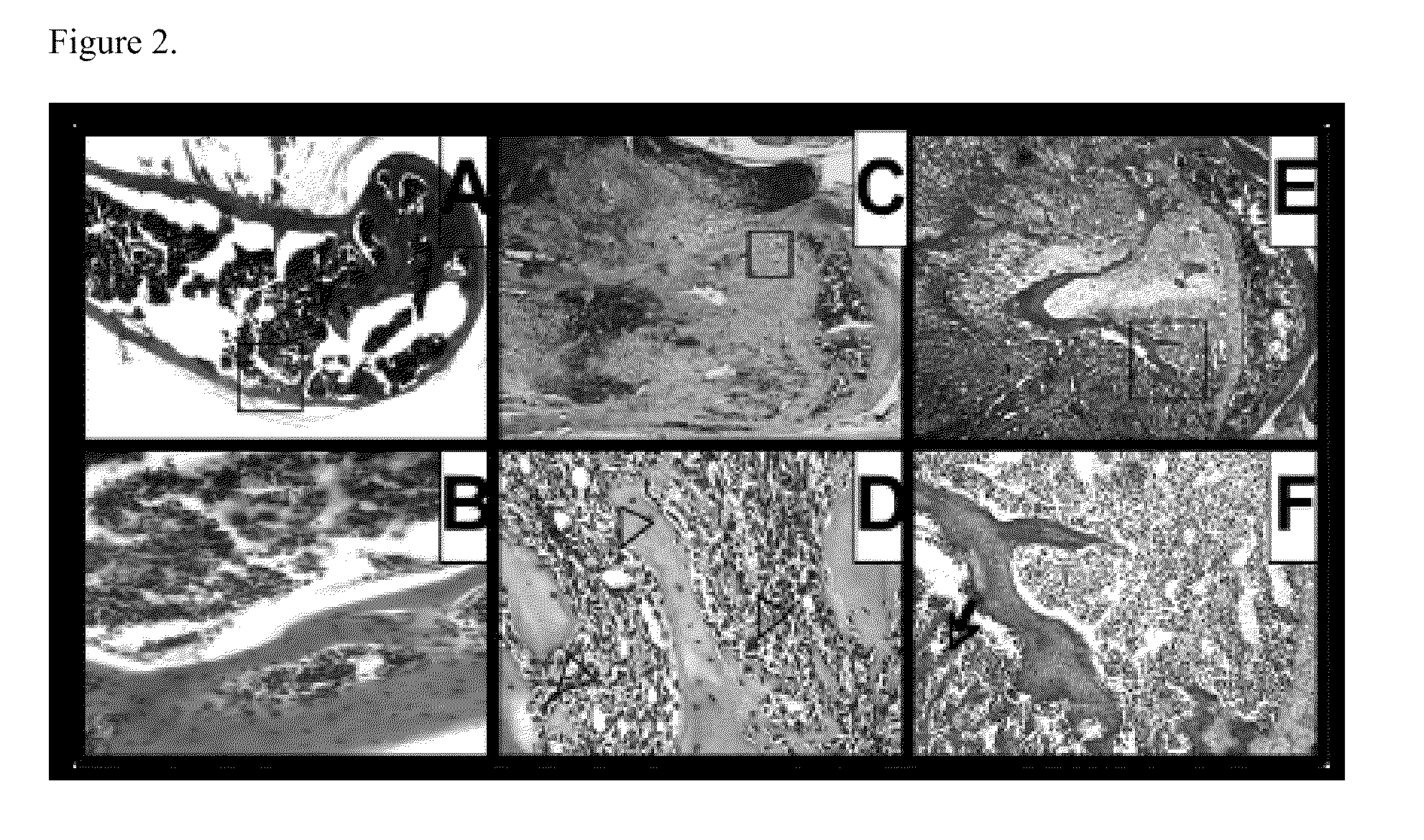Compositions and Methods For Treating Bone Formation Disorders
- Summary
- Abstract
- Description
- Claims
- Application Information
AI Technical Summary
Benefits of technology
Problems solved by technology
Method used
Image
Examples
example i
[0067]This example demonstrates that maspin promotes new bone formation in a mouse model. Representative radiographs for bone lesions from mice were inoculated by intracardiac injection of mouse mammary TM40D (control) and maspin-overexpression TM40D-Mp tumor cells. As shown in FIG. 1A, a typical image of the long bone from a normal control mouse is presented. FIG. 1B shows a representative image of bone lesions from mice inoculated with TM40D tumor cells. FIG. 1C shows representative image of bone lesions from mice inoculated with TM40D-Mp cells.
example ii
[0068]This example describes histological analysis of bone lesions from mice inoculated with TM40D and TM40D-Mp tumor cells. FIG. 2, panels A-B, present typical H&E sections of the long bone of normal mouse. FIG. 2, panels C-D, show representative section of bone lesions from mice inoculated with TM40D tumor cells wherein the arrow indicates the area of tumor cells. FIG. 2, panels E-F, show representative section of bone lesions from mice inoculated with TM40D-Mp cells. As shown in FIG. 2, significant new bone formation was observed with overexpression of maspin.
example iii
[0069]This example describes the effect of maspin on osteoblast proliferation and new bone formation in an organ culture model. As shown in FIG. 3A, calvariae were removed from 4 days-old BABL / c new-born mice. The calvariae were either treated with or without concentrated conditional medium from TM40D and maspin-overexpression TM40D-Mp cells or treated with recombinant GST-Mp or GST-Mp with or without an anti-maspin antibody for 7 days. As shown, osteoblast proliferation and new bone formation was demonstrated. FIG. 3B shows quantitation of the average number of osteoblasts under the different treatments shown in FIG. 3A. Three randomly selected fields at the same pixel size were viewed under the microscope (X200), and the number of defined osteoblasts was counted. The average number of osteoblasts was analyzed using a statistical program. *P=0.03; **P<0.01; ***P=0.011.
PUM
 Login to View More
Login to View More Abstract
Description
Claims
Application Information
 Login to View More
Login to View More - R&D
- Intellectual Property
- Life Sciences
- Materials
- Tech Scout
- Unparalleled Data Quality
- Higher Quality Content
- 60% Fewer Hallucinations
Browse by: Latest US Patents, China's latest patents, Technical Efficacy Thesaurus, Application Domain, Technology Topic, Popular Technical Reports.
© 2025 PatSnap. All rights reserved.Legal|Privacy policy|Modern Slavery Act Transparency Statement|Sitemap|About US| Contact US: help@patsnap.com



